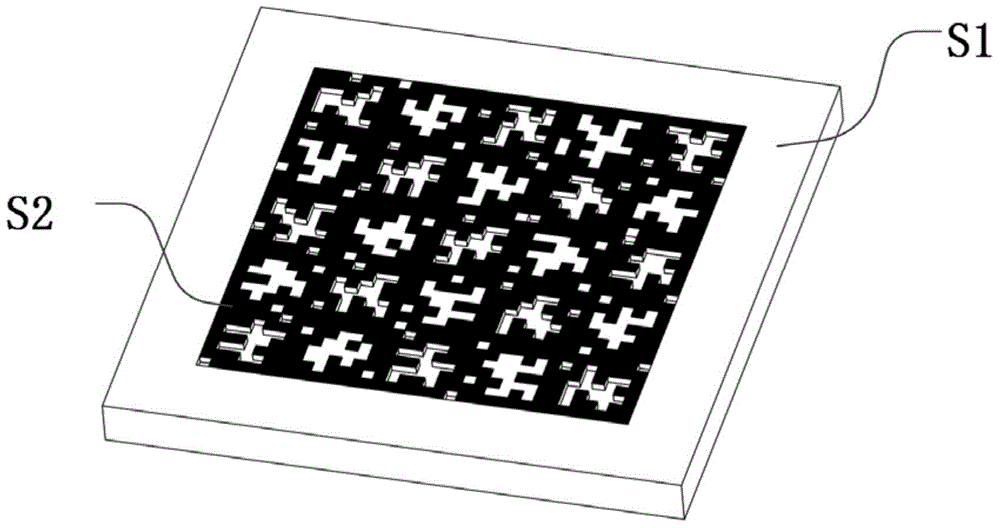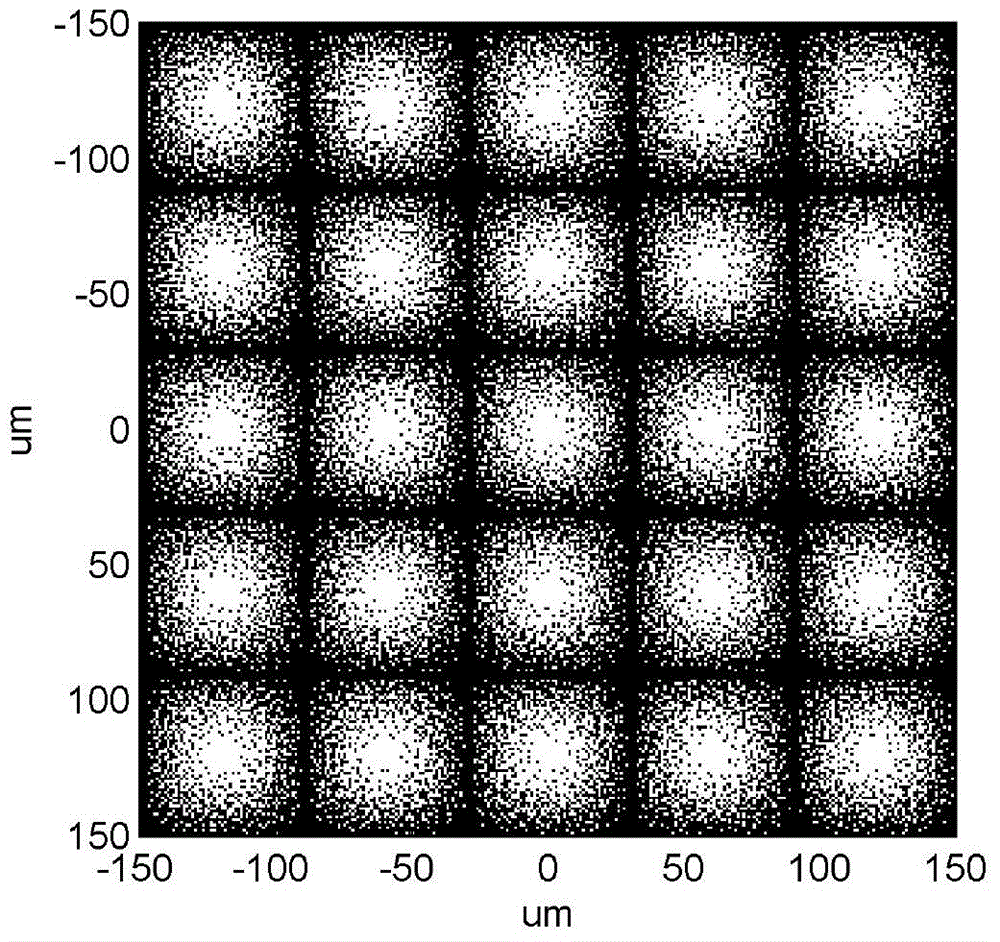Randomly-coded hybrid grating based on light flux constraint
A technology of random coding and hybrid grating, applied in the field of random coding hybrid grating, can solve the problems of unfavorable instrument adjustment, interference effect, complex system structure, etc., and achieve the effects of improving system stability, improving detection accuracy, and simplifying system structure.
- Summary
- Abstract
- Description
- Claims
- Application Information
AI Technical Summary
Problems solved by technology
Method used
Image
Examples
Embodiment 1
[0032] The present invention can be made into a randomly coded hybrid grating based on luminous flux constraint with an incident light wavelength λ of 632.8nm and a grating distance d of 120um. The grating uses quartz as a substrate, its refractive index n is about 1.46, and a chrome film is used as a mask. image 3 It is the transmittance distribution diagram of the grating within the size range of 300um*300um, where the white area is the light-transmitting area without mask coverage, the black area is the opaque area covered by the mask, and the mask covers part of the area on the substrate So that the luminous flux in each area of 9 square microns satisfies distribution, and in each area of 9 square microns, the mask is randomly arranged in small squares of 1 square micron; Figure 4 It is the etching depth distribution map of the grating in the corresponding area of 300um*300um, where the white area is the area that does not need to be etched, and the black area is ...
Embodiment 2
[0034] An example of the four-wave transverse shear interference wavefront detection applied to continuous wavefronts by the present invention is described as follows:
[0035] Figure 5 It is a system structure diagram of four-wave transverse shear interference continuous wavefront detection based on random coded hybrid grating based on luminous flux constraint. The distorted wavefront to be measured in this embodiment is a continuous wavefront with an aperture of Φ=8mm and a wavelength of 632.8nm. After the wavefront to be measured passes through the random-coded hybrid grating, it will be divided into four wavefronts of ±1 level in two orthogonal directions. Using the computer to control the CCD to collect the overlapping parts of the four beam spots can obtain the four-wave transverse shear interferogram, such as Figure 6 .
[0036] After obtaining the cross-grating transverse shear interferogram, the wavefront to be measured needs to be reconstructed by differential Z...
Embodiment 3
[0052] The real-time detection of the four-wave transverse shear interference wavefront applied to the transient wavefront by the present invention is described as follows:
[0053] Figure 9 It is a system structure diagram of a random-coded hybrid grating based on luminous flux constraints for four-wave transverse shear interference transient wavefront detection. The system is composed of pulsed laser, laser driver, synchronous trigger control system, collimated beam expander system, random code hybrid grating, CCD and computer. After the laser is output by the pulse laser, it is expanded into a wide beam of Φ=25mm by the collimator beam expander system. After the beam passes through the disturbance field, it will carry the inhomogeneous information of the refractive index in the disturbance field to the wavefront distortion. The disturbance here The field generally refers to the high-speed air flow field or other disturbance fields in the wind tunnel. After the wavefront ...
PUM
| Property | Measurement | Unit |
|---|---|---|
| Caliber | aaaaa | aaaaa |
| Wavelength | aaaaa | aaaaa |
Abstract
Description
Claims
Application Information
 Login to View More
Login to View More - R&D
- Intellectual Property
- Life Sciences
- Materials
- Tech Scout
- Unparalleled Data Quality
- Higher Quality Content
- 60% Fewer Hallucinations
Browse by: Latest US Patents, China's latest patents, Technical Efficacy Thesaurus, Application Domain, Technology Topic, Popular Technical Reports.
© 2025 PatSnap. All rights reserved.Legal|Privacy policy|Modern Slavery Act Transparency Statement|Sitemap|About US| Contact US: help@patsnap.com



